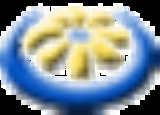
University of the Arctic
Encyclopedia
The University of the Arctic (UArctic) is an international cooperative network based in the circumpolar region, consisting of universities, colleges and other organizations with an interest in promoting education and research in the North
. UArctic was launched on June 12, 2001, endorsed by the Arctic Council
and in conjunction with the 10th anniversary of the Rovaniemi Process and the Arctic Environmental Protection Strategy.
The overall goal of the University of the Arctic is to create a strong, sustainable circumpolar region by empowering indigenous peoples and other northerners through education, mobility and shared knowledge.

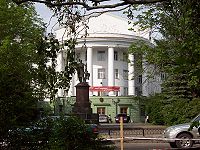
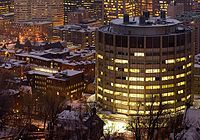
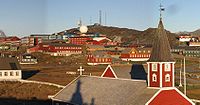
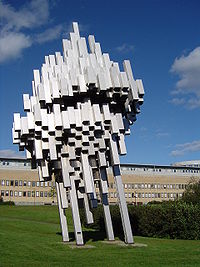
(20), Denmark
(3), Finland
(11), Iceland
(2), Norway
(10), Russia
(14), Sweden
(4) and the United States (5). In addition, the University of the Highlands and Islands in Scotland
is a member.
Other members include circumpolar indigenous organizations and research institutions.
of a parliamentary democracy. Between Council meetings, the executive committee, Toyon, deals with relevant issues. Toyon consists of the Chair, the Vice-secretary and the Chairs of all standing committees. All these positions are elected by the Council.
" of UArctic is the Board of Governors, which is also elected by the council. At the Board meetings, the President and leader of the International Secretariat also participate. The Board works with the Council and Administration on relevant issues, and may delegate specific tasks.
.
in Rovaniemi, Finland.
The Circumpolar Studies program gives students the opportunity to learn about the lands, peoples, and issues of the circumpolar world and prepares them for advanced study or professional employment in fields as diverse as sustainable resource management, self-government, Arctic engineering, and northern tourism. Special emphasis is given to matters concerning Indigenous people of the Circumpolar North.
The Circumpolar Studies program consists of two required components: The BCS Core and an Advanced Emphasis.
The BCS Core consists of one lower-level introductory course and six upper-level advanced courses in three interdisciplinary fields of study. Together, the core enables students to gain a broad knowledge and understanding of the lands, peoples, and critical issues of the circumpolar world. Advanced Emphases are programs of study, roughly equivalent to a semester of schooling, that focus on the advanced research of an area, issue, or problem of particular relevance to the North and for its people.
As a north2north participant, students travel to another circumpolar institution for a period of 3–12 months. This time period is dependent on the needs of the student, as well as the structures of their home and host institutions. Students have the advantage of taking courses that may not be available at their home institution and the courses taken during the exchange year are credited toward your degree. Of course, the value of the knowledge students gain outside the classroom in their new communities is beyond measurement. Successful applicants will receive a mobility grant to facilitate their stay at the host institution.
The purpose of the Northern Research Forum is to promote intensive dialogue among members of the research community and a wide range of other northern stakeholders. This dialogue addresses the critical issues, problems and opportunities facing circumpolar peoples in the context of social and environmental changes and economic globalization. The Forum provides an open meeting for policy-relevant discussion on the role of research in addressing issues of sustainable development, community viability, peace and security, social and environmental policy, and the impacts of global change.
A Thematic Network may focus its activities on one or several of the following: research cooperation, knowledge sharing, curriculum development, joint education programs in a specific field, or form the umbrella for UArctic participants in international workgroups. Examples of Thematic Networks includes: UArctic Indigenous Thematic Network on Community-based Natural Resource Co-management; Thematic Network in Arctic Agriculture and Nature Use - the Northern Agriculture PhD Network; Thematic Network on World Images of Indigenous Peoples of the North; Thematic Networks on Indigenous Arts and Crafts; and, Thematic Network on Northern Governance.
Arctic
The Arctic is a region located at the northern-most part of the Earth. The Arctic consists of the Arctic Ocean and parts of Canada, Russia, Greenland, the United States, Norway, Sweden, Finland, and Iceland. The Arctic region consists of a vast, ice-covered ocean, surrounded by treeless permafrost...
. UArctic was launched on June 12, 2001, endorsed by the Arctic Council
Arctic Council
The Arctic Council is a high-level intergovernmental forum which addresses issues faced by the Arctic governments and the indigenous people of the Arctic.- History of the Arctic Council :...
and in conjunction with the 10th anniversary of the Rovaniemi Process and the Arctic Environmental Protection Strategy.
The overall goal of the University of the Arctic is to create a strong, sustainable circumpolar region by empowering indigenous peoples and other northerners through education, mobility and shared knowledge.
History





Member institutions
There are 110 member institutions of UArctic, 85 of which are educational institutions from the 8 Arctic states: CanadaCanada
Canada is a North American country consisting of ten provinces and three territories. Located in the northern part of the continent, it extends from the Atlantic Ocean in the east to the Pacific Ocean in the west, and northward into the Arctic Ocean...
(20), Denmark
Denmark
Denmark is a Scandinavian country in Northern Europe. The countries of Denmark and Greenland, as well as the Faroe Islands, constitute the Kingdom of Denmark . It is the southernmost of the Nordic countries, southwest of Sweden and south of Norway, and bordered to the south by Germany. Denmark...
(3), Finland
Finland
Finland , officially the Republic of Finland, is a Nordic country situated in the Fennoscandian region of Northern Europe. It is bordered by Sweden in the west, Norway in the north and Russia in the east, while Estonia lies to its south across the Gulf of Finland.Around 5.4 million people reside...
(11), Iceland
Iceland
Iceland , described as the Republic of Iceland, is a Nordic and European island country in the North Atlantic Ocean, on the Mid-Atlantic Ridge. Iceland also refers to the main island of the country, which contains almost all the population and almost all the land area. The country has a population...
(2), Norway
Norway
Norway , officially the Kingdom of Norway, is a Nordic unitary constitutional monarchy whose territory comprises the western portion of the Scandinavian Peninsula, Jan Mayen, and the Arctic archipelago of Svalbard and Bouvet Island. Norway has a total area of and a population of about 4.9 million...
(10), Russia
Russia
Russia or , officially known as both Russia and the Russian Federation , is a country in northern Eurasia. It is a federal semi-presidential republic, comprising 83 federal subjects...
(14), Sweden
Sweden
Sweden , officially the Kingdom of Sweden , is a Nordic country on the Scandinavian Peninsula in Northern Europe. Sweden borders with Norway and Finland and is connected to Denmark by a bridge-tunnel across the Öresund....
(4) and the United States (5). In addition, the University of the Highlands and Islands in Scotland
Scotland
Scotland is a country that is part of the United Kingdom. Occupying the northern third of the island of Great Britain, it shares a border with England to the south and is bounded by the North Sea to the east, the Atlantic Ocean to the north and west, and the North Channel and Irish Sea to the...
is a member.
Other members include circumpolar indigenous organizations and research institutions.
Organization, governance, and administration
The University of the Arctic is governed by a structure in which the member institutions are represented through various mechanisms. It has evolved steadily since the organization's founding in 2001, with the latest addition being the Rectors' Forum (2006).Council and Toyon
The foundation of the structure is the annual UArctic Council, which consists of representatives from all member institutions. It holds powers roughly corresponding to the parliamentParliament
A parliament is a legislature, especially in those countries whose system of government is based on the Westminster system modeled after that of the United Kingdom. The name is derived from the French , the action of parler : a parlement is a discussion. The term came to mean a meeting at which...
of a parliamentary democracy. Between Council meetings, the executive committee, Toyon, deals with relevant issues. Toyon consists of the Chair, the Vice-secretary and the Chairs of all standing committees. All these positions are elected by the Council.
Board of Governors
The "governmentGovernment
Government refers to the legislators, administrators, and arbitrators in the administrative bureaucracy who control a state at a given time, and to the system of government by which they are organized...
" of UArctic is the Board of Governors, which is also elected by the council. At the Board meetings, the President and leader of the International Secretariat also participate. The Board works with the Council and Administration on relevant issues, and may delegate specific tasks.
President
The President of UArctic is the organization's chief executive officer and is responsible for overall administration and the development and delivery of its programs. S/he is accountable to the Board for the overall management of the University and elected by the Council. The President participates ex officio in meetings of the Council, Toyon and the Board, and may form committees or other subsidiary bodies to carry out the programs and activities of the University. The current President is Lars Kullerud of GRID, NorwayNorway
Norway , officially the Kingdom of Norway, is a Nordic unitary constitutional monarchy whose territory comprises the western portion of the Scandinavian Peninsula, Jan Mayen, and the Arctic archipelago of Svalbard and Bouvet Island. Norway has a total area of and a population of about 4.9 million...
.
International Secretariat
The Secretariat has the primary responsibility for coordinating internal and external information, examples of which are the monthly UArctic newsletter, Shared Voices, the website and news services. The Secretariat provides support for the rest of the UArctic structure. It is located at the University of LaplandUniversity of Lapland
The University of Lapland is located in the city of Rovaniemi, Finland. It was founded in 1979.The university is divided into four faculties:* Faculty of Art and Design* Faculty of Education* Faculty of Law* Faculty of Social Sciences...
in Rovaniemi, Finland.
Rectors' Forum
The Rectors' Forum brings together university and college Presidents, Rectors, Provosts, Chancellors and Vice-Presidents around specific themes. The Forum is reserved for institutional leadership and is not intended as a representative forum for members—the Council of UArctic serves that function—but rather it allows member institutions' top leaders meet to debate the activity of the organization.Bachelor of Circumpolar Studies
The Circumpolar Studies program is an exciting way for students attending University of the Arctic member institutions to learn about the North, with courses held in the classroom, online, outdoors, and around the world.The Circumpolar Studies program gives students the opportunity to learn about the lands, peoples, and issues of the circumpolar world and prepares them for advanced study or professional employment in fields as diverse as sustainable resource management, self-government, Arctic engineering, and northern tourism. Special emphasis is given to matters concerning Indigenous people of the Circumpolar North.
The Circumpolar Studies program consists of two required components: The BCS Core and an Advanced Emphasis.
The BCS Core consists of one lower-level introductory course and six upper-level advanced courses in three interdisciplinary fields of study. Together, the core enables students to gain a broad knowledge and understanding of the lands, peoples, and critical issues of the circumpolar world. Advanced Emphases are programs of study, roughly equivalent to a semester of schooling, that focus on the advanced research of an area, issue, or problem of particular relevance to the North and for its people.
north2north
The north2north student exchange program provides opportunities for students from UArctic member institutions to experience different northern regions firsthand, and to share experiences face-to-face by allowing students to study at other UArctic institutions.As a north2north participant, students travel to another circumpolar institution for a period of 3–12 months. This time period is dependent on the needs of the student, as well as the structures of their home and host institutions. Students have the advantage of taking courses that may not be available at their home institution and the courses taken during the exchange year are credited toward your degree. Of course, the value of the knowledge students gain outside the classroom in their new communities is beyond measurement. Successful applicants will receive a mobility grant to facilitate their stay at the host institution.
GoNorth
GoNorth offers opportunities for students from the south to go study at a northern higher education institution and experience life in the Circumpolar North. GoNorth is a two-year Erasmus Mundus project with 12 member institutions of the UArctic. The project partners cooperate to make higher education in the North more visible and accessible worldwide. UArctic's GoNorth Mobility Program is using the Erasmus Mundus program to further its aims of recruiting students to higher education institutions in the circumpolar areas.Studies Catalog
The Studies Catalog is a tool for UArctic programs and members to market and display their northern relevant study opportunity. The catalog will link to already existing online electronic material, updating the information automatically every 24 hours based on the information provided on the web-site of the institution that does the teaching.Field School
The UArctic Field School incorporates a selection of short, thematically focused courses that provide training for young researchers at member institutions in relevant fields. The Field School provides specialized onsite study of northern issues, organized by northern institutions. The UArctic Field School catalog is an online database of field excursion courses in which students from UArctic member institutions can participate.northTREX
Northern Teaching Resources Exchange program, northTREX, provides opportunities for northern teachers to gain circumpolar experiences and perspectives, and strengthens northern institutions' abilities to share faculty resources. The program allows institutions to draw on a circumpolar pool of academic faculty, enabling UArctic partner institutions to enrich their curricular offerings. Mobility in this program normally lasts for less than 3 months. Faculty assignments are usually linked to thematic networks and student exchange in the north2north program.Northern Research Forum
The Northern Research Forum provides a platform for effective, policy-relevant discussion and the sharing of research on northern issues. Meetings are held biennially, and a wide variety of scientists, policy makers and representatives of other stakeholders participate in them.The purpose of the Northern Research Forum is to promote intensive dialogue among members of the research community and a wide range of other northern stakeholders. This dialogue addresses the critical issues, problems and opportunities facing circumpolar peoples in the context of social and environmental changes and economic globalization. The Forum provides an open meeting for policy-relevant discussion on the role of research in addressing issues of sustainable development, community viability, peace and security, social and environmental policy, and the impacts of global change.
Thematic Networks
UArctic Thematic Networks are independent and thematically focused networks of experts in specific areas of northern relevance. Thematic Networks encourage faculty and institutional cooperation on subjects of shared interest among UArctic members. UArctic Thematic Networks aim at stimulating cooperation, sharing of resources, and are important tools for developing the stable relations among member institutions that form the backbone of UArctic activities. This includes student and faculty exchange, and joint curriculum and degree development as well as research.A Thematic Network may focus its activities on one or several of the following: research cooperation, knowledge sharing, curriculum development, joint education programs in a specific field, or form the umbrella for UArctic participants in international workgroups. Examples of Thematic Networks includes: UArctic Indigenous Thematic Network on Community-based Natural Resource Co-management; Thematic Network in Arctic Agriculture and Nature Use - the Northern Agriculture PhD Network; Thematic Network on World Images of Indigenous Peoples of the North; Thematic Networks on Indigenous Arts and Crafts; and, Thematic Network on Northern Governance.

